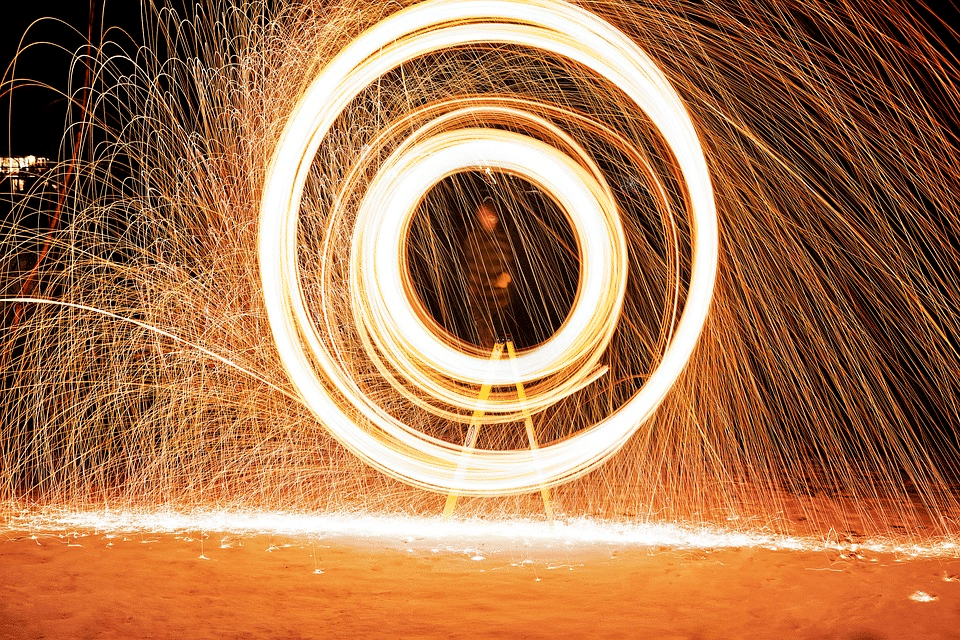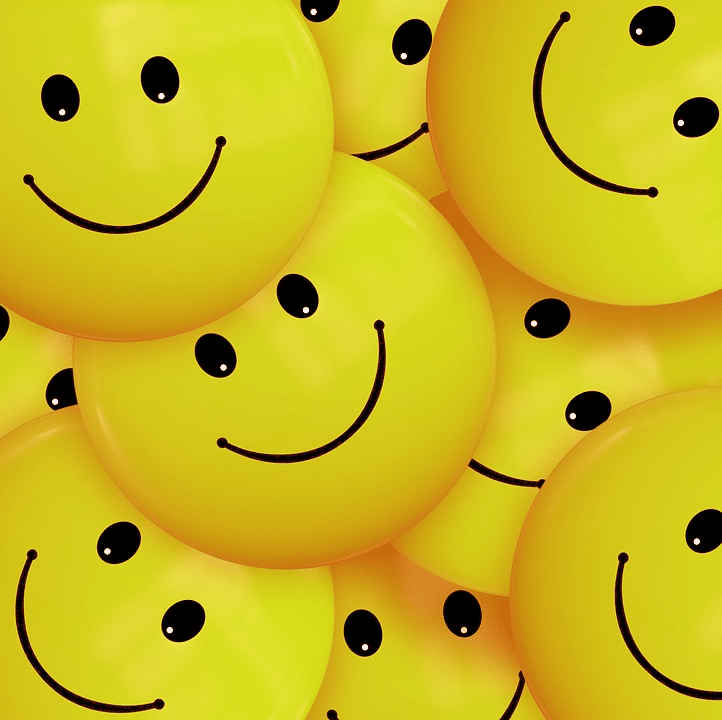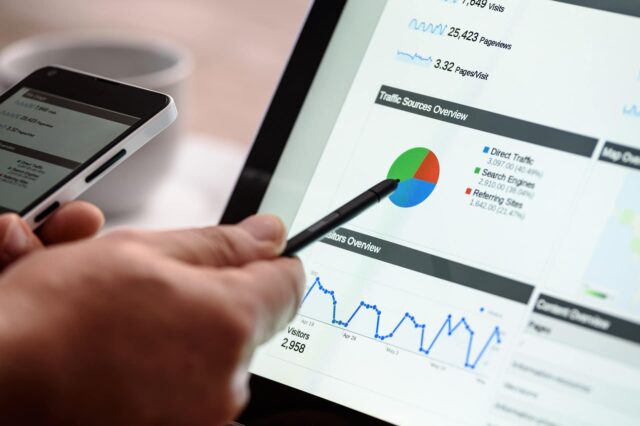How To Use The Power Of Color In Your Website Design
Color is one of the most important elements in the life of nearly every person which is why it should be an important element in your website design. Just think about how often you think about color in your life. You, no doubt consider it when buying clothes, choosing the color of your vehicle, painting your walls, choosing your crockery and appliances, just to name a few of the common color-based decisions people make.
Color is something people will think about consciously or subconsciously, which is why it is such an important part of web design, and why it is one of the first things you need to think about in the design of your site. After all, you don’t consider your website to be less important than the color of your dinner plates, do you? Of course not, and neither does anyone at On The Map Marketing. We have years of experience designing successful, high-ranking websites for a variety of different companies, so we know how to use the power of color to attract visitors and highlight your brand.
Why Color Is Important
Color makes an impact. You notice this in your everyday life, from the color of traffic lights, to the various items in the grocery store, to the colors associated with the different brands you use. Colors and shapes are among the first things we notice when we are born, so it is no surprise that the impact of colors is so ingrained in our minds.
Different colors evoke different feelings—a topic also covered here—which is why color is so important in website design. That’s because it is important in life itself. Think about it: would a fire engine have the same impact if it was painted orange? What if Apple had chosen green as the color of their brand instead of pristine white? Can you even imagine it? Doing so is difficult for most people, which is an indication of how strongly we link colors with various associations and brands.
How To Use Color In Your Website Design
Color can increase brand awareness by up to 80%. So, if you want to attract the right people, you need to use the right color. But it is not just about choosing one statement color and then slathering it all over your website. Good design is about knowing where and when to use color, and also knowing when not to use it.
The most obvious use of color in your website design is on the homepage. This is the page people see when they click the link to your website, and a prominent color instantly gets their attention and keeps them interested. This is also the place where you immediately get a chance to establish your brand in the eyes of the visitor, and the color used in the website helps immensely. They say you only get one chance to make a first impression and using the right color is a quick, simple, and effective way to make that first impression a great one.
Another place where using the right color can help is on the call-to-action (CTA) button. This is the button that encourages the user to take some form of action, whether it is to place an order on an e-commerce site, or to contact an attorney for legal advice on a lawyer website.
Highlighting the CTA with a splash of color is a great way to get people to notice it without making it glaring or obnoxious. You can make the CTA follow the overall color trend of your website or make it a contrasting color so that it stands out more. That is just one of the many different ways color can be used in your website design.
How To Choose The Right Color For Your Website

The color you choose for your website depends on a few factors, but the main ones are the intent you want your brand to evoke and the emotion you want to instill in the visitor. Other factors include whether similar sites already use that color scheme and whether it looks good on all devices, from desktops down to smartphones.
If you are already set on a color scheme, you can discuss it with our designers to find out whether it works on a website or not. If you have not yet chosen a color, we can help you with one that best represents your brand and will stand out and make a bold statement. As stated earlier, colors evoke different moods and emotions so you want to choose one that is right for your brand.
How Colors Affect People
Responses can be subjective, but generally people will have a similar overall reaction to colors and even if they don’t, they will at least understand the mood the website intends to evoke and respond the right way. Here are some of the most commonly used colors in website design.
Red

Red evokes a feeling of passion, intensity, and urgency, with various shades conveying different versions of that feeling. Bright red can invoke feelings of passion and energy, while dark red can be used to give a feeling of authority and luxury. Generally, red commands attention, so it should be used carefully and judiciously.
Positive Connotations: It gives a feeling of energy and passion and is very eye-catching.
Negative Connotations: Can be seen as overtly bold or aggressive.
Suitable for: Food and/or beverage companies. Companies that have a sexy, yet sophisticated, image.
Examples: Coca-Cola, Puma, Diesel.
Blue

This color is usually used to show loyalty, authority, and trustworthiness, which is why many businesses use it. That is also why business suits and some police uniforms are often blue. If you want to show that you are a business that can be trusted, then blue is a good color to use.
Positive Connotations: Instills a feeling of trust and authority. It can also be tranquil and calming.
Negative Connotations: Can be seen as a safe, conservative choice.
Suitable for: Law firms, tech companies, insurance companies.
Examples: Blue Cross, LinkedIn, AllState.
Green

It is associated with life and nature and can provide a feeling of balance and calm. However, in America, dark green can also be associated with money, so green has a variety of different uses. As a result, you should be careful about the shade of green you use. It is a natural choice for eco-friendly companies or companies that represent the wellness industry.
Positive Connotations: Life, nature, growth, vitality, renewal.
Negative Connotations: Can be seen as a predictable choice for some brands. It is also associated with jealous feelings, lack of experience, and marijuana—though this might not be a negative for some.
Suitable for: Ecologically aware companies. Companies that prize recycling and renewal. Nature based brands.
Examples: Starbucks, Nature Valley, Whole Foods.
Orange

If you want to impart a feeling of fun and enthusiasm, then orange is the best choice. It is also an eye-catching color, so it can attract attention in a more subtle manner than a bright color like red. Orange can also be used to instill a sense of accessibility and affordability.
Positive Connotations: Enthusiasm, fun, and adventure. It is attention getting without being aggressive.
Negative Connotations: Can be seen as overly youthful.
Suitable for: Companies with an affordable product line. Brands that want to show a youthful enthusiasm.
Examples: Nickelodeon, Amazon, Home Depot.
Yellow

A bright, sunny color associated with optimism and positivity; the iconic smiley face is one of the first things that come to mind when people think of yellow, especially since it is the default color of most smiley face emojis. Brands that want to express a cheerful, happy feeling usually go with yellow. It is also a very bold color that stands out from all other colors, so it is associated with brashness and confidence as well.
Positive Connotations: Positivity, happiness, confidence, a sense of speed and purpose.
Negative Connotations: It is the color most typically associated with cowardice.
Suitable for: Brands that want their customers to feel good and happy. Companies that want to showcase the speed or briskness of their services.
Examples: McDonalds, Ferrari, Best Buy.
These are just some of the most common examples, there are also the other colors of the rainbow, which are indigo and violet. Not to mention the shades of black, grey, and white. There are an infinite variety of colors to choose from and we will help to guide you in your decision.
The Proper Use Of Color In Your Website

The considerations of different screen sizes was already mentioned, but there are other design decisions to follow.
Contrast is Important
The color scheme of your website should not have a negative impact on the sites navigability. The use of a color that contrasts with the main color is a good way of avoiding that problem. White contrasts with most dark colors, so that is always a good choice when you want the text to remain readable against a dark background color. If there is a CTA button on the homepage then it should be highlighted in a contrasting color in order to really pop and get the user’s attention.
ADA (Americans with Disabilities Act) Accessibility is also Paramount
Many people have various forms of color blindness and if you want your website to cater to as many people as possible, then they should be able to use your website as well. This does not have to reduce the design ambition of your website, rather the contrast levels should be increased, which can make your website even more visually impressive.
Content is Key
A bold design will attract attention, great content will keep it. The color scheme should complement the content, not overwhelm it or obscure it. Your website needs to be more than just a pretty face if you want to keep visitors from leaving soon after they have arrived. Invest in good content and your visitors will stick around for longer.
Color Is Just One Part Of The Web Design Process
Content, accessibility, and SEO (Search Engine Optimization) are all just as important, since the combination of all those practices result in higher rankings and greater conversions. On The Map Marketing is an experienced digital marketing firm that uses all of those practices to ensure that our clients have pleasing websites that attract—and retain—a high number of visitors. There is a reason why our logo is blue, take another look at the positive connotations of that color if you need a reminder.
FAQS
Q. Can I choose more than one primary color for my website?
A. Yes, as long as they are complementary in both style and mood. Blue and black can be a good combination for a store that sells high end items. Black can connote style and luxury, while the blue indicates trustworthiness and reliability.
Q. What if I my business already has a color scheme that may not be appropriate for my website, but I want to keep my business brand unified and consistent?
A. We can work with you to highlight your signature color in a way that is both web-friendly and consistent with your brand, such as using it as a contrast color, or in other subtle—but noticeable—ways.
Q. Do I need a colorful website to stand out?
A. No, a black and white website with splashes of color can be a bold design choice. You don’t have to use all, or even any, of the colors of the rainbow if you don’t want to.
Table of Contents
Related Articles
Dominate Your Market with Digital Marketing Services That Deliver
Talk to a certified professional today, and we will design a strategy specific to your case.




